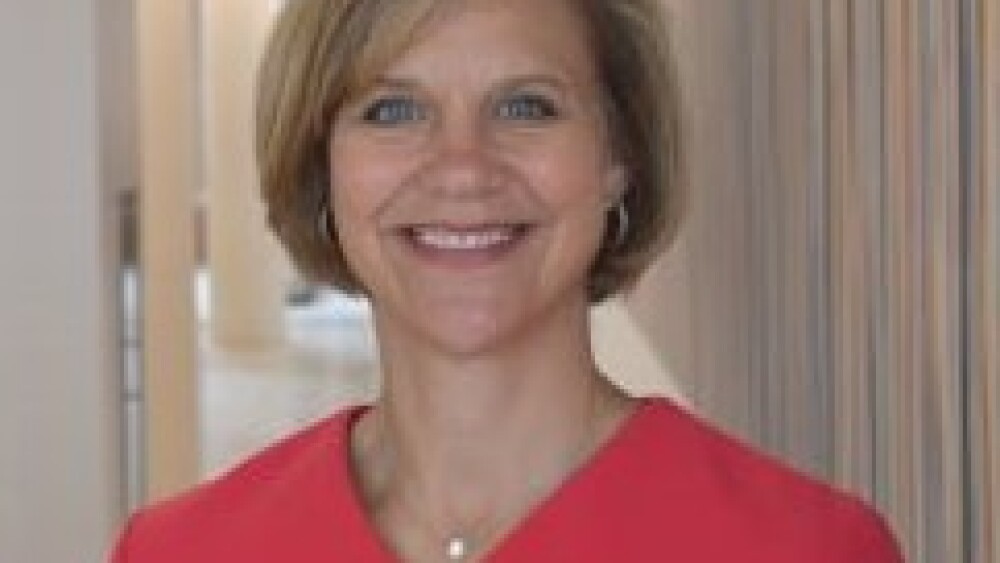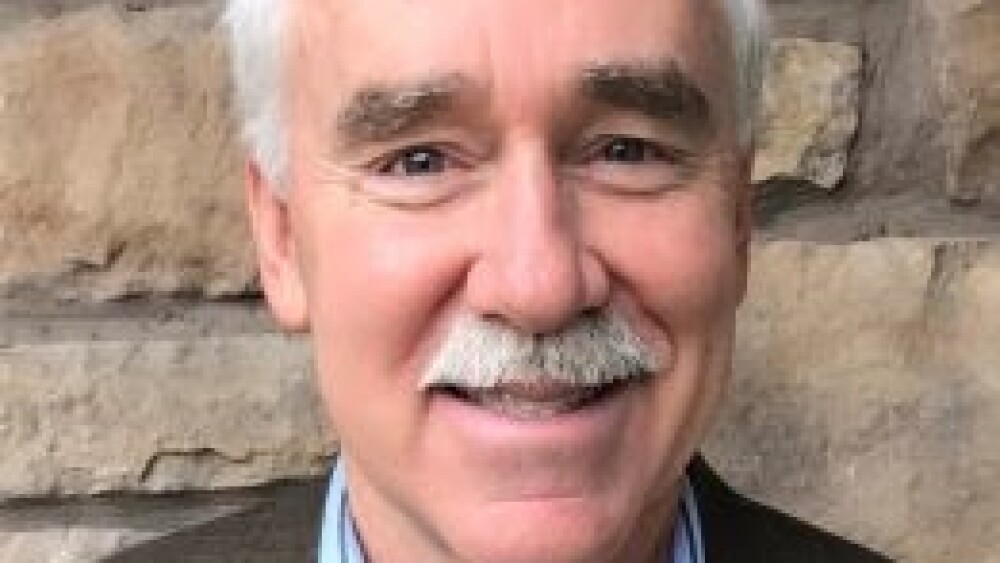BioSpace sat down with 12 executives who shared their thoughts on the coming year and decade.
After a decade of breakthroughs in biopharma, highlighted by the development of a vaccine against the novel coronavirus in just nine months, expectations of 2022 couldn’t be higher. From a continued focus on oncology and the resurgence of risk appetite in neuroscience, many expect a rebound for the life sciences capital markets paired with a year of M&A. BioSpace sat down with 12 executives who shared their thoughts on the coming year and decade.
Another Transformational Decade
Jonathan Rigby, CEO of Revolo Bio, whose mission is to revolutionize autoimmune and allergic disease treatment by resetting the immune system, suggested that we look at recent history to help predict the future. He highlighted the past decade, which saw the approval of the first anti-cancer immunotherapies and cell therapies, the development of the first CRISPR gene-editing technology and the approval of the first antibody-based therapy for Alzheimer’s disease [Biogen’s Aduhelm]. “Next year, I have zero doubt that this will occur again,” he said. “There’s a lot of developments in cancer therapies using your own immune system to battle cancers. I think there are going to be some revolutionary breakthroughs there. I think what we’re seeing because of COVID: more monoclonal antibody cocktails approved and antiviral drugs, because the pandemic is not going away.”
BSp: What will the hottest therapeutic space be in 2022?
JR: I think oncology. You can see that there’s a lot of money. There’s more money invested in oncology than any other disease, I believe, and that’s for good reason. Then, in my slightly biased opinion, there’s a lot of work in autoimmune disease as well, which is currently underserved by products that are on the market.
Messenger RNA: A Validated Drug Mine
“All of a sudden, almost every person in the world almost knows this word: mRNA,” said Yochi Slonim, co-founder and CEO of Anima Biotech, a New Jersey-based company developing selective small-molecule mRNA drugs with its mRNA Lightning platform. For Slonim, mRNA is a “validated drug mine. I’m thinking that going forward, this is the biggest wave that is going to impact drugs, because it’s got so much momentum and so much positive thinking right now, and the biology is there. It seems like the whole pharmaceutical industry is eager to get in.”
BSp: What therapeutic areas will be hot in 2022?
YS: We are seeing a lot more openness and willingness to partner at the early stage in neuroscience. In general, what we are seeing is that in neuroscience, the pharmas have kind of reprioritized. We are seeing much more activity there, as well as a willingness to take risks.
Slonim also highlighted artificial intelligence, which Anima uses as a way to determine a molecule’s mechanism of action on the mRNA.
Biopharma Prepares for the Genericization Cliff
For John Glasspool, CEO of Anthos Therapeutics, which is developing life-preserving treatments for patients at high risk of cardiovascular and metabolic diseases, the biggest trend will be a reemergence of M&A. “I think that valuation will be driven by two things: valuations moving more into a normal range and an increasing recognition of the next genericization cliff of pharma where [companies] will need to start acting in 2022 in order to be ready to meet those genericization cliffs.”
BSp: What will the hottest therapeutic space be in 2022?
JG: I think in 2022, we’ll see continued focus on cell and gene therapy. I think we’ll probably start to see some new delivery vectors. From a gene-editing perspective, I think some exciting additions beyond Cas9, which will open up that field as well. I see that some additional developments in RNA technology, particularly circular RNA, will start to emerge in 2022, and I think we’ll start to see some emerging new classes like condensates start to get data that give them some traction.
FDA is Flexing Some Regulatory Flexibility
Paula Ragan, Ph.D., CEO and president of rare disease innovator X4 Pharmaceuticals, touched on the approval of aducanumab (Aduhelm) for Alzheimer’s disease.
BSp: What will the hottest therapeutic space be in 2022?
PR: Alzheimer’s, and broadly neurodegenerative diseases, are some of the most challenging therapeutic areas to study because of the slow progression and the CNS components. It’s a very difficult therapeutic area to innovative, so I thought the [U.S. Food and Drug Administration]’s flexibility signals a positive future for that field in general, and we already see people like [Eli Lilly] coming in with their data set. I know there’s a lot of negative press around the pricing, but at the end of the day, when you have hard diseases to study, showing some regulatory flexibility and rigor signals positivity long-term, so I was really encouraged by the 2021 start to that journey.
Last year was another strong year for FDA approvals, with 50 novel drugs making the cut. Ragan is hopeful that this will continue. “I want to give a shoutout to the FDA because I think they’ve been incredibly responsive and part of the overall solution for not only the COVID field but more broadly. So, I certainly hope that when you take COVID off the table, I really think that that trajectory will continue.
A Rebound for Biotech Capital Markets
Dr. Jim Brown, D.V.M., president and CEO of DURECT, highlighted one of 2021’s hottest emerging areas as one that would continue to expand in 2022. “I believe the hot new area, the area coming forth, is going to be epigenomics,” said Brown, whose company is working to transform the treatment of acute organ injury and chronic liver diseases with its endogenous epigenetic regulator program. “But it’s different from what we see in the epigenomics of oncology, where it’s used to kill cells and to disrupt the cancer cell division. In this case, we’re looking at reparative medicine and at epigenomics in that way.”
BSp: What is on the horizon for the biopharma industry?
JB: First off is the capital markets for biotech. I think we’re going to see a turnaround there, especially for small-cap. I think we should expect to see some recovery there, and I think that’s going to also drive M&A, or maybe M&A is driven by the value there.
The Time Is Now for Neuroscience
For Andy Kidd, M.D., president & CEO at Aptinyx, which is developing therapies for serious CNS diseases through the modulation of NMDA receptors, neuroscience is finally in the spotlight.
BSp: What does 2022 look like in terms of the CNS/neuroscience space?
AK: Last year, in 2021, there was actually a large amount of interest, a large amount of funding that flowed into the neuroscience area, which is a really nice thing to see. Five or six years ago, that was not the case, and I think firms have a better understanding of the underlying biology. So, I think 2022 is really a year wherein neuroscience, we should hopefully start to see real progress being made. I also think there’s continued interest now in the psychiatric side of neuroscience, and part of this has been heightened by the pandemic.
BSp: What other therapeutic spaces will be hot in 2022?
AK: I think one of the other areas that you see a lot of interest in now is looking at new ways to find targets for diseases. It’s a little bit less particular to the grouping of diseases or the particular diseases than maybe in the past. There’s a lot of interest now in people who are trying to understand complicated biology.
Synthetic Control Arms in Oncology
Dr. Hong Tang, M.D., co-founder and chief medical officer of OnQuality Pharmaceuticals, shared her belief that oncology supportive therapies are a future upcoming trend “because there has been a lag behind after target therapy, immunotherapy or gene therapy; the side effects have not been addressed.”
OnQuality CEO Michael McCullar added, “It’s very clear that there is a need to help patients manage the side effects, largely because many times when they occur in the skin or in the GI tract, it causes dose reductions or dose interruptions, and we know there’s a very high correlation between the ability for a patient to maintain dose intensity and outcomes.”
BSp: What do you see on the horizon in the oncology space?
MM: I think the big challenge, in my mind, I’d love to see ways to increase participation in clinical trials in oncology. It’s essentially an impediment for patients, as well as for the ability to get new drugs to the market so that patients can have additional options. I think one solution to that is finding new ways to use synthetic control arms or decentralized trials, and this whole concept of a digital twin, to essentially have a synthetic control arm so we don’t have to put patients on standard of care.
The Continuation of the Golden Age of Biotech
For Dr. Beth Seidenberg, M.D., founding managing director of Westlake Village BioPartners, “Gen 2” technology has arrived.
BSp: What do you see on the horizon in the biopharma world?
BS: The cost of sequencing has gone down faster than Moore’s law. If you look at the price and ability to really get human data insights, it’s getting more robust every year. We’re now seeing all of the research and science come together, looking much more like an engineering-based science where you can focus on not only what genes may be mutated or protein misfunction, but you can also start to look at specific engineering of cells.
I think what we’re going to keep seeing is more and more of this convergence of engineering, computer technology, AI/ML. People talk about it, but now it’s actually being put to use in much more interesting ways than I’ve ever seen in my career.
Seidenberg shared the example of Westlake company Arsenal Bio, whose proprietary platform combines CRISPR-based genome engineering, scaled and high throughput target identification, synthetic biology and machine learning to advance immune cell therapies. “The progress they’ve made in just two years has exceeded every expectation I ever had,” she said.
Cardiology is Making a Comeback Due to High Unmet Need
“Cardiology is coming back on the scene,” said Craig Fraser, CEO and President of Windtree Therapeutics, a clinical-stage company developing therapies for acute cardiovascular and pulmonary syndromes. “In part, the SGLT2 inhibitors for diabetes, that all of a sudden have these remarkable results and promise in chronic heart failure in the outpatient setting, has been a major breakthrough, and there haven’t been breakthroughs in a long time. I’ll make this prediction: In the next one to three years, you’re going to see a lot more cardiovascular therapies coming to the forefront… with the prevalence of populations with obesity and diabetes, and the baby boomers, these are hot areas, and we haven’t had any therapeutic breakthroughs in a long time in any of them.”
BSp: What other therapeutic areas will be hot in 2022?
CF: Oncology and immunology are going to continue to garnish a lot of attention, I think, primarily because there’s just a lot of work and a lot of development happening there, and cell-based therapy. I think we’re starting to see promise.
Genomic Data is Creating a Revolution in Precision Oncology
The “explosion of data” occurring in oncology research today is going to create a “revolution of precision medicine,” said Jim Gabriele, president and CEO of M2GEN, a health informatics solutions company focused on enabling precision oncology therapeutics and diagnostics.
BSp: What do you see on the horizon in the oncology space?
JG: There’s an explosion in oncology of molecular sequencing and molecular assessments. Most patients now in academic medical studies, and even on the community side, are getting some form of genetic assessment associated with their care. There will be incredible opportunity for folks in the pharmaceutical industry to use that data to essentially come up with cures for cancers.
Besides oncology, Gabriele added that clinical genomic data also has applications in immunological diseases in terms of understanding response rates to combination therapies among smaller subsets of patients.
The Oncology Trend Toward Seamless Phase I/II Trials
Dr. Ian Walters, M.D., CEO of Portage, a clinical-stage immuno-oncology company targeting known checkpoint resistance pathways, wanted to focus on solid tumors, which represent more than 90% of cancers.
What will the hottest therapeutic space be in 2022?
IW: One area that is becoming very hot is antibody-drug conjugates. We’re seeing pretty remarkable data ... survival improving from 12 months to 26.7 months, so I think that’s kind of reenergized the market in this approach. Another area that’s been exciting is what I would call targeting the untargetable.
Walters specifically highlighted KRAS mutations, which are prevalent in lung cancer. “It’s been very, very difficult to target historically, and people have made some advances in that area. We’ve seen an increasing interest in bispecific antibodies. Bispecifics have been showing more and more utility,” he added.
He also pointed to an emerging trend in oncology toward seamless Phase I and Phase II clinical trials. “Cancer is a unique model. The tumors don’t usually go away on their own, so if you see a tumor go away, you get confidence that the drug is doing what it was designed to do, and companies get valued as if their probability of technical success is very high. I think that’s why there’s a lot of venture dollars going in because you can get a very early signal.”


















